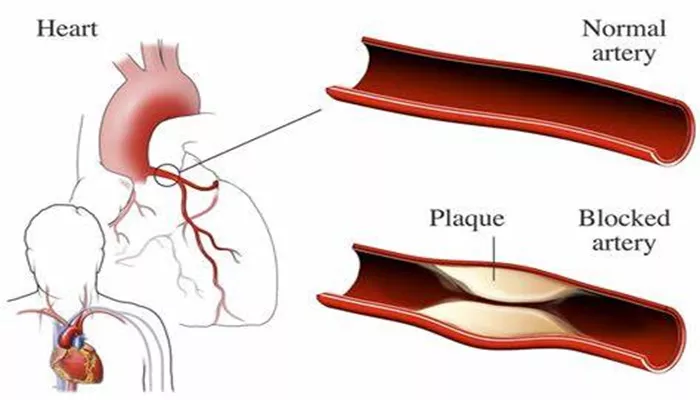Hypertension, commonly known as high blood pressure, is a significant public health concern affecting millions of people worldwide. It is a condition where the force of the blood against the walls of the arteries is consistently too high. This condition can lead to serious health complications, including heart disease, stroke, and kidney failure.
Understanding the different types of systemic hypertension is crucial for effective diagnosis and management. This article will explore the various types of systemic hypertension, their causes, symptoms, and treatment options.
What Is Systemic Hypertension?
Systemic hypertension refers specifically to high blood pressure in the systemic arteries, which carry oxygen-rich blood from the heart to the rest of the body. The condition is typically classified into two main categories: primary (essential) hypertension and secondary hypertension. Each type has distinct characteristics and underlying causes.
What Are The Types of Systemic Hypertension?
1. Primary Hypertension
Primary hypertension is the most common form of high blood pressure, accounting for approximately 90-95% of all cases. It is defined as high blood pressure that develops gradually over many years without a specific identifiable cause.
Causes of Primary Hypertension
While the exact cause of primary hypertension remains unclear, several factors are believed to contribute to its development:
Genetics: A family history of hypertension increases the likelihood of developing the condition.
Age: Blood pressure tends to rise with age due to changes in blood vessel elasticity and increased vascular resistance.
Lifestyle Factors: Poor diet, lack of physical activity, obesity, smoking, and excessive alcohol consumption can significantly increase the risk of developing primary hypertension.
Stress: Chronic stress may contribute to temporary increases in blood pressure and can lead to long-term hypertension.
Salt Intake: High sodium consumption can cause the body to retain fluid, leading to increased blood pressure.
see also: How Do Ace Inhibitors Help to Treat Hypertension
Symptoms of Primary Hypertension
Primary hypertension is often called the “silent killer” because it typically does not present noticeable symptoms until significant damage has occurred. Some individuals may experience:
- Headaches
- Dizziness
- Shortness of breath
- Nosebleeds
- Chest pain
However, these symptoms are not specific to hypertension and may indicate other health issues.
2. Secondary Hypertension
Secondary hypertension is high blood pressure that results from an identifiable underlying condition. This type accounts for about 5-10% of hypertension cases and is more common in younger individuals.
Causes of Secondary Hypertension
Secondary hypertension can be caused by a variety of conditions, including:
Kidney Disease: Conditions such as chronic kidney disease or renal artery stenosis can lead to increased blood pressure due to impaired kidney function.
Hormonal Disorders: Disorders affecting hormone levels, such as primary aldosteronism, Cushing’s syndrome, or pheochromocytoma, can cause secondary hypertension.
Obstructive Sleep Apnea: This sleep disorder can lead to increased blood pressure during sleep and throughout the day.
Medications: Certain medications, including NSAIDs, steroids, and some antidepressants, can raise blood pressure.
Congenital Heart Defects: Structural heart issues, such as coarctation of the aorta, can lead to hypertension.
Symptoms of Secondary Hypertension
Similar to primary hypertension, secondary hypertension may not present noticeable symptoms. However, individuals may experience more pronounced symptoms related to the underlying condition, such as:
- Severe headaches
- Blurred vision
- Shortness of breath
- Chest pain
- Fatigue
Types of Systemic Hypertension
In addition to primary and secondary hypertension, there are several subtypes of systemic hypertension that are important to recognize:
1. Resistant Hypertension
Resistant hypertension refers to high blood pressure that remains above target levels despite the use of three or more antihypertensive medications, including a diuretic. This condition can be particularly challenging to manage and may require further investigation to rule out secondary causes.
Causes of Resistant Hypertension
Non-adherence to Medication: Patients may not take their medications as prescribed, leading to uncontrolled blood pressure.
Suboptimal Treatment: The prescribed medications may not be effective for the individual, necessitating a reevaluation of their treatment plan.
Secondary Causes: Undiagnosed secondary hypertension can contribute to resistance.
2. Isolated Systolic Hypertension
Isolated systolic hypertension (ISH) is characterized by a systolic blood pressure of 140 mm Hg or higher, while the diastolic blood pressure remains below 90 mm Hg. This condition is more common in older adults and can pose significant health risks.
Causes of Isolated Systolic Hypertension
Arterial Stiffness: Aging can lead to stiffening of the arteries, resulting in elevated systolic pressure.
Increased Cardiac Output: Conditions that increase the heart’s output can lead to higher systolic readings.
3. Malignant Hypertension
Malignant hypertension is a severe form of high blood pressure that occurs when blood pressure rises above 180/120 mm Hg and is associated with acute damage to organs. This condition is a medical emergency and requires immediate treatment.
Symptoms of Malignant Hypertension
- Severe headache
- Nausea and vomiting
- Blurred vision
- Confusion
- Chest pain
Diagnosis of Systemic Hypertension
Diagnosing systemic hypertension typically involves:
Blood Pressure Measurement: Blood pressure readings are taken using a sphygmomanometer. A diagnosis of hypertension is made when blood pressure consistently exceeds 130/80 mm Hg.
Medical History: A thorough medical history is taken to identify risk factors and any underlying conditions.
Physical Examination: A physical examination may reveal signs of organ damage or other health issues.
Laboratory Tests: Blood tests, urine tests, and imaging studies may be conducted to identify secondary causes or assess organ function.
Conclusion
Systemic hypertension is a complex condition that can significantly impact health if left untreated. Understanding the different types of hypertension—primary, secondary, resistant, isolated systolic, and malignant—is crucial for effective diagnosis and management. Early detection and intervention can help prevent serious complications associated with high blood pressure. By adopting lifestyle modifications and utilizing appropriate pharmacological treatments, individuals can effectively manage their blood pressure and improve their overall health.


